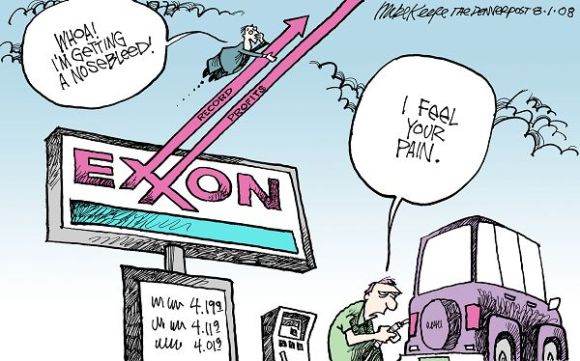With the Oscar’s upon us, our minds as a nation tend to drift towards the extravagance as a result of watching global icons in Hollywood’s biggest party of the year. Opulence and decadence are the most appropriate adjectives to describe the evening and more specifically the gowns and tuxedos worn to the event. It is fairly common for dresses to cost tens of thousands of dollars as designers use the star-studded event to promote their fashion lines and brands on the most expensive mannequins money can buy.[1] Despite the lavishness however, many of these actors and actresses are heavily involved with charities and humanitarian efforts. Their global statuses help to raise tremendous amounts of money for causes they deem valuable, or even crucial for society to survive moving forward. Leonardo DiCaprio for example has consistently sought to bring about awareness of environmental issues through his Leonardo DiCaprio Foundation (LDF). DiCaprio’s latest project is called LYON, which is an organic and fair trade coffee company, whose proceeds support LDF’s other sustainable ventures which include, but are not limited to, “…Wildlife protection, forest preservation, clean water, and climate change.”[2]
In addition, Colin Firth, who currently is working on a project to help save the Brazilian indigenous Awa tribe, who are being threatened as a result of illegal logging of the Amazon Rainforest, is among a growing population of celebrities who are involved with charities and humanitarian efforts geared around the environment and green issues.[3]
And while it is difficult to say that some charities are more valuable or important than others, the impact of green initiatives and sustainability affect us all to some degree or another. I realize that the focus of the Oscars (or any other awards show in general) is not charity i.e. the Guardian Charity Awards. Yet, a lot of good can be done by a simple celebrity plugin. Actors and actresses are already asked what and who they are “wearing” for the evening. By wearing a green inspired dress or tuxedo and mentioning that to the public is relatively harmless, and is in line with the questioning they already receive from reporters for the night. Imagine how much awareness for green clothing can be provided by even a single celebrity endorser. For example, just think about how many eyeballs watch an event like the Oscar’s. Now imagine the amount of attention a green clothing initiative would receive if say a George Clooney wore a hemp fused Armani tuxedo or a Jennifer Lawrence wore a Donna Karen dress made from recyclable materials. The amount of good press for a celebrity who endorses such a movement and for the designer, who took time out to make a sustainable and fashionable garment for a celebrity to wear, would only be equaled by the amount of exposure for the green clothing movement. Celebrities are already involved with green charities. Yet, their statuses as global icons will only help to push a movement like sustainable clothing quickly into mainstream if they choose to endorse it. What a personal and humanitarian statement that would make if a celebrity showed up to an event that is broadcast worldwide in elegant clothing made from green materials. Let’s push our celebrities to wear sustainable clothing and to promote the movement’s ideals to a worldwide audience. In that way the world can see the possibilities of sustainable clothing and can further help to promote a world in which we live green, and be green.









